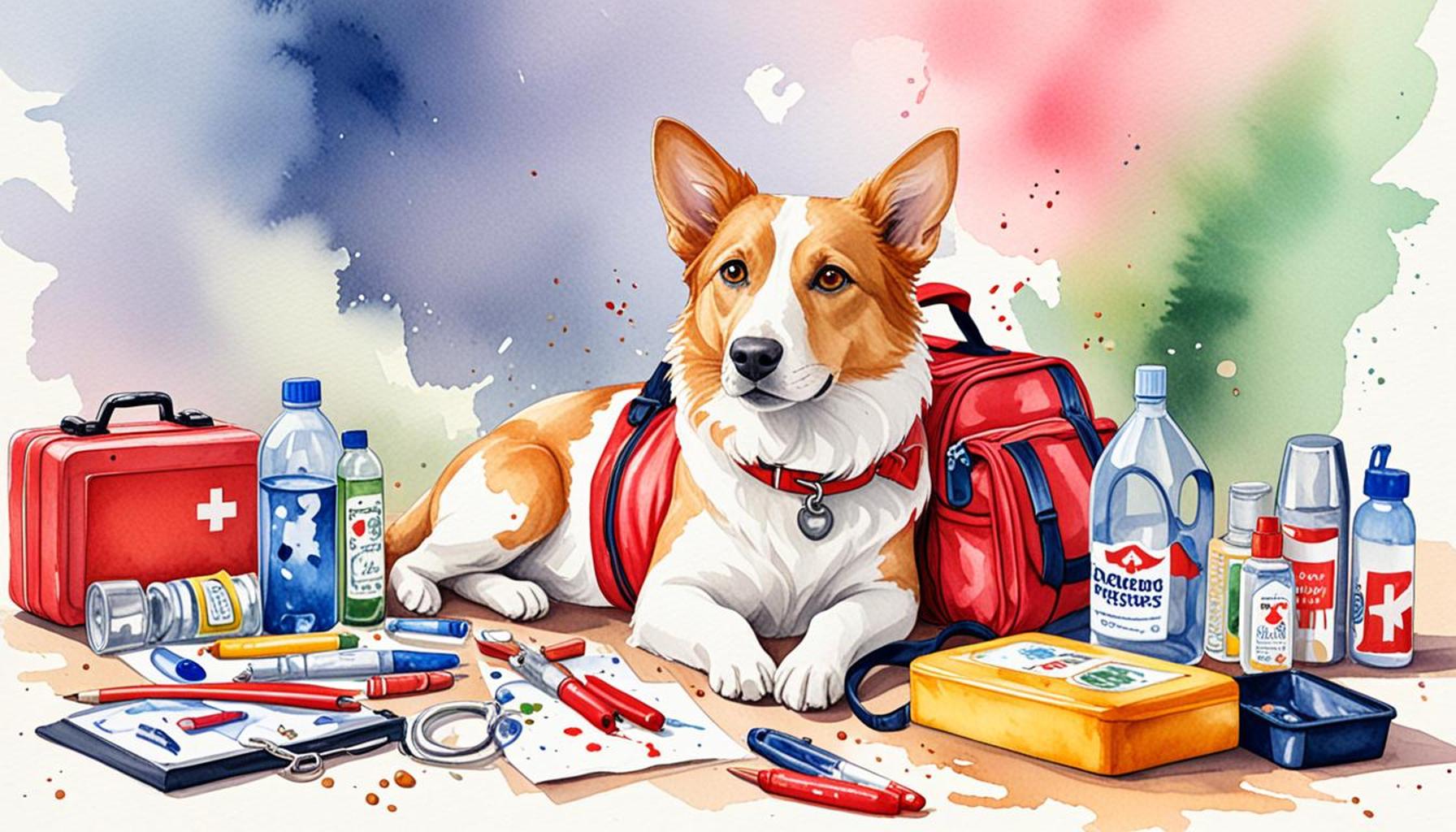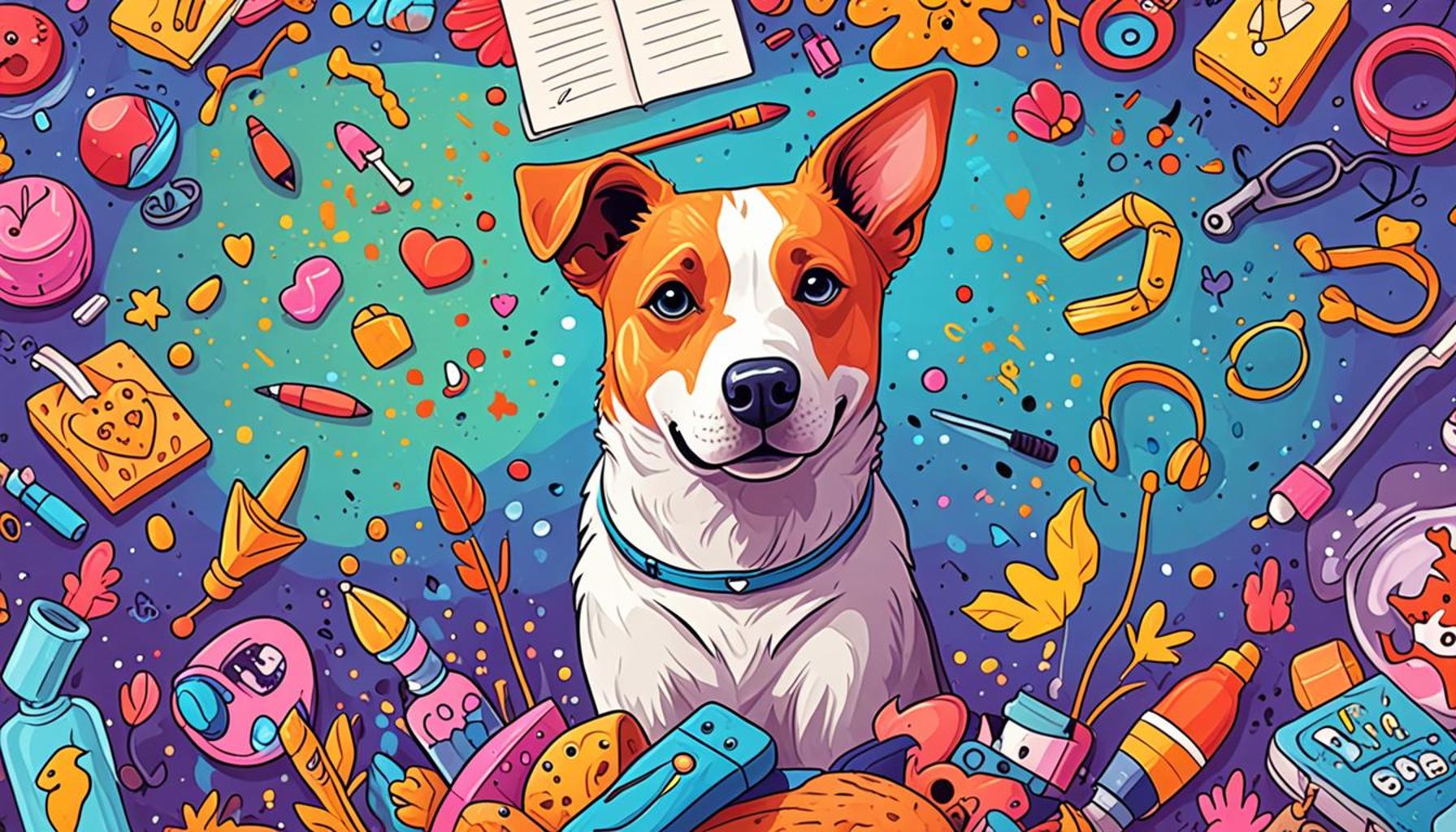Emergency Preparedness for Pet Owners: How to Keep Your Pets Safe in Crises

Understanding the Importance of Emergency Preparedness
For pet owners, the safety and security of beloved companions are paramount, especially in times of crisis. When disaster strikes—whether a natural event such as floods, earthquakes, or hurricanes, or unforeseen emergencies like house fires or gas leaks—having a comprehensive emergency plan becomes not just a precaution, but a necessity. The inherent chaos during such situations can be daunting, and a clearly defined strategy can drastically minimize panic and ensure that your pets are safe and cared for.
Why You Need an Emergency Plan
Preparing for emergencies is crucial for several vital reasons:
- Protection: The primary goal of any emergency plan is to safeguard your pets from serious injury or loss. Statistics indicate that millions of pets are displaced or lost during disasters, often due to a lack of preparation. By having a plan, you can ensure your pets are safe and accounted for when situations escalate.
- Peace of Mind: It’s natural to feel anxious during crises; however, knowing that you have a strategy to protect your pets can alleviate much of that stress. An effective emergency plan allows you to act decisively when every second counts, making the course of action clearer amidst the chaos.
- Responsibility: As a pet owner, it is your duty to ensure the safety of all family members—including your furry, feathered, or scaly companions. Every year, countless pets are lost, abandoned, or injured simply because their owners were unprepared. Showing responsibility by preparing for emergencies reflects the love and care you extend to your pets.
Data shows that countless animals are affected by disasters annually, underscoring the need for specific preparations. Local animal shelters and rescue operations report an influx of pets in crises, highlighting the significant impact of natural disasters on animal welfare. By creating an emergency response plan, you not only prioritize your pets’ safety but also help ease your own anxiety when unexpected challenges arise.
What to Include in Your Plan
To get started on establishing a robust emergency preparedness plan for your pets, consider including the following essential components:
- Evacuation routes: Familiarize yourself with multiple routes for quick exits. Research local evacuation centers that accept pets, and know how to reach them effectively. Be sure to include alternative paths in case your usual routes are obstructed.
- Pet supplies: Stock up on essential pet supplies, including an adequate amount of food, bottled water, medications, and comfort items such as toys or blankets. This stockpile should be easily accessible in case you need to evacuate quickly.
- Identification: Ensure every pet wears a proper ID tag with your contact information. More importantly, consider microchipping your pets, which can greatly enhance the chances of reuniting with them if separated during a disaster.
Taking the time to educate yourself and implement these strategies can significantly enhance the chances of keeping your pets safe during emergencies. As we explore further into effective preparedness techniques, you’ll find that proactive measures bring peace of mind and foster a deep sense of responsibility that resonates with the love you have for your pets.
DISCOVER: Click here to learn effective training techniques for your cat
Creating an Emergency Preparedness Strategy
When it comes to emergency preparedness for pet owners, one of the most critical steps is crafting a tailored strategy that addresses your unique circumstances. Every pet owner’s situation is different, influenced by factors such as the type of pets, the layout of the home, and the local environment. Therefore, a one-size-fits-all approach does not suffice. Instead, customizing your emergency plan will fortify the safety of your pets during potential crises.
Assess Your Risks
The first step in developing your emergency strategy is to assess the specific risks in your area. Pet owners in coastal regions may need to prioritize hurricane preparedness, while those near fault lines must focus on earthquake response plans. Consider the following factors when evaluating your situation:
- Local Environment: Take note of natural disasters that are prevalent in your region. Whether it’s tornadoes, floods, or wildfires, understanding the potential threats is vital in determining your plan of action.
- Your Pet’s Needs: Different pets have varying requirements depending on their size, breed, and health conditions. For instance, a large dog might require a different evacuation measure compared to a small bird or reptile. Tailoring your plan can ensure all pets are handled appropriately.
- Home Layout: Familiarize yourself with your home’s layout to identify safe areas for your pets during emergencies. Designate a “safe room” if necessary, equipped with supplies and essentials to minimize stress on your pets when they need to be secured.
By thoroughly assessing these risks, you can create a robust framework that prioritizes not only the immediate safety of your pets but also their emotional well-being during unexpected situations. Pets can sense anxiety and fear, and having a plan in place can help minimize their stress.
Building Your Emergency Kit
Once you’ve assessed your risks, the next step is to assemble an emergency kit that provides for your pets’ needs during crises. This kit should contain essential supplies that will support your pets in times of upheaval. Here are key items to include:
- Food and Water: Store at least a week’s worth of food and fresh water for your pets. Remember to bring collapsible bowls for mealtime, making it easier to feed them while on the go.
- Medications and Medical Records: If your pet requires any medications, keep a supply on hand along with a copy of their medical records for easy access in case you need to visit a veterinarian during an emergency.
- Leashes and Carriers: Have leashes and carriers readily available for quick transport. Familiarize your pets with their carriers ahead of time, so they feel comfortable and safe during evacuation.
Building an emergency kit tailored specifically for your pets not only prepares you for unforeseen disasters but also lessens the overall burden of worry during stressful times. Movement towards preparedness will undoubtedly create a more secure and resilient environment for your pets.
Creating Emergency Plans for Your Pets
When it comes to keeping pets safe during crises, preparing a detailed emergency plan is paramount. Start by identifying potential emergencies such as natural disasters, fires, or medical emergencies. Establish a safe meeting place for family members and your pets where everyone can gather during a crisis. This ensures that no one is left behind in the chaos.Next, assemble a pet emergency kit. This kit should include essential supplies such as food, water, medications, a leash, identification tags, and a portable pet carrier. It’s important to customize this kit for each pet’s specific needs. For example, if your pet requires daily medication, make sure to include a sufficient supply. Additionally, keep an extra set of vital documents like vaccination records and microchip information well-organized and easily accessible.Regularly practice your emergency plan with your pets. This can include taking them on short trips in their carriers or practicing evacuation routes. The more familiar your pets are with the protocol, the less stressed they will be in the event of a real emergency. Training your pets to respond to commands and remain calm in stressful situations can also significantly enhance their safety and your peace of mind.It’s also prudent to stay informed about local resources for pet evacuations and shelters during emergencies. Many communities have designated animal shelters or pet-friendly evacuation centers which can accommodate pets during crises. Finally, don’t forget to include your pets in any fire drill or emergency evacuation procedure at home. Practice makes perfect, and being prepared will help ensure that you and your furry friends can weather any storm together.
Understanding the Importance of Identification
In times of chaos, it is critical to ensure all pets are properly identified. Microchipping your pets and ensuring they wear collars with identification tags can greatly increase the chances of reunion should you become separated during a crisis. A microchip can provide vital information about you and your pet that helps recovery efforts. Make sure to keep the microchip registration updated with current contact details. By implementing these strategies, you can significantly enhance your pets’ safety during emergencies, ensuring their needs are met and minimizing stress. Understanding the importance of preparedness is the first step to ensuring their well-being in uncertain times.
DISCOVER MORE: Click here to enhance your puppy’s training
Evacuation Plans and Strategies
Having an effective evacuation plan is vital for pet owners concerned with emergency preparedness. The importance of knowing how to evacuate quickly and efficiently cannot be overstated, especially when time is of the essence. A well-defined evacuation strategy ensures that both you and your pets can swiftly leave a dangerous situation without the added stress of last-minute decisions.
Designate Safe Havens
Begin by identifying potential safe havens where you can bring your pets during a crisis. Local shelters, friends’ homes, or hotels that accept pets can serve as excellent destinations. Keep in mind that during emergencies, these places may require advance bookings or have specific protocols in place. Research pet-friendly facilities in your area and create a contact list with their addresses and phone numbers. Verify that they are willing to accommodate pets during emergencies, especially during hurricane season or other unpredictable events.
Practice Evacuation Drills
Just as families practice fire drills, pet owners should conduct regular evacuation drills that include pets. These drills familiarize your pets with the evacuation process, reducing their anxiety in an actual emergency. Start by leashing your pet, gathering your emergency kit, and practicing the quick exit from your home. Aim for a thorough understanding of how long it takes to evacuate your home completely with your pets. This practice should include the use of carriers, leashes, and proper handling techniques for different types of pets, ensuring they remain calm and cooperative when it matters most.
Microchipping and Identification
In the chaos of a crisis, lost pets are a significant concern. To mitigate this risk, ensure your pets are microchipped and wearing proper identification at all times. Microchipping is a simple and effective way to ensure that, should your pet become lost during an emergency, they can be returned to you quickly and safely. Additionally, keep identification tags updated with your most current contact information. If you’re forced to evacuate, consider carrying a current photo of your pet. This can aid in identification should you become separated.
Local Resources and Networks
Establishing connections with local pet organizations and emergency response agencies can provide invaluable support during a crisis. Many communities have pet disaster response teams that are designed to help pets during emergencies. These groups often organize rescue efforts, provide emergency shelter, and educate pet owners about safety measures. Engaging with local resources such as veterinarians and animal control can also yield beneficial information about specific risks associated with your area, helping to tailor your emergency preparedness strategies effectively.
Engage Your Community
Finally, fostering a sense of community can be beneficial during emergencies. Connect with fellow pet owners and share strategies for preparedness. Organize community meet-ups to create awareness, ensuring everyone knows the best practices and resources available for emergency preparedness. A unified approach to emergency planning can bolster the safety of pets in your neighborhood and enhance overall preparedness.
By meticulously designing evacuation plans, training your pets, and leveraging community resources, you will significantly enhance your emergency preparedness. These strategies not only safeguard your pets during crises but also create peace of mind for pet owners in times of uncertainty.
DISCOVER MORE: Click here for effective training techniques
Conclusion
Ensuring the safety of your pets during a crisis requires proactive planning and community collaboration. By prioritizing emergency preparedness for pet owners, you equip yourself with the necessary knowledge and tools to protect your beloved animals in unforeseen circumstances. Establishing a solid evacuation plan, identifying pet-friendly shelters, and practicing evacuation drills can dramatically reduce the stress of emergency situations.
Moreover, investing in microchipping and keeping identification updated can significantly increase the chances of reuniting with your pet should you become separated. It is equally important to build relationships with local resources, such as veterinarians and pet organizations, which can provide critical support during emergencies. Engaging with fellow pet owners fosters a sense of community that can provide additional safety nets, making it easier to share valuable information and resources.
Ultimately, the heart of emergency preparedness lies in the willingness to take action before crises arise. The confidence that comes from being prepared not only safeguards your pets but also provides peace of mind. As unpredictable events can occur at any moment, your commitment to creating a comprehensive emergency plan signifies a responsible and loving partnership with your pets. Take the time to consider your unique circumstances, make informed decisions, and stay informed about best practices to ensure that you and your pets can face any challenge together.



